On 9/11, not even the Yukon was far enough away
During yesterday’s 11th anniversary of the terrorist attacks that changed the world that most of us knew, New York was of course the focus. Most people outside the Yukon have forgotten, or perhaps never heard, how Whitehorse was affected. Lots has been written about what happened at the Whitehorse airport on September 11th, 2001, but it’s all been cleansed to be politically correct, in my opinion.
I attended a memorial at the airport yesterday that honoured the part played by emergency responders, and by the community at large. The most vivid memory I have of that day is awakening to the reality that the residents of Whitehorse were considered to be expendible by military and government leaders.
The basic story is that 2 Korean Air Boeing 747s, one a cargo aircraft and the other carrying passengers, were thought to be hijacked en route to Anchorage, Alaska (see Wikipedia and a report by Yukon Emergency Measures for more details). The United States would not allow them to go anywhere near any airport with a runway long enough to handle 747s, as they were all either military bases or had a military base close by. The only airport suitable was Whitehorse, though the airport was not certified for use by 747s, and was beyond the normal fuel range of the Korean aircraft. For about an hour and a half, all we knew is that two 747s, possibly hijacked and possibly part of the New York attacks, were headed for our town. The Whitehorse airport is adjacent to downtown, and a power dam is only a few hundred yards from the runway center line, a perfect target for suicidal hijackers. The situation in Whitehorse was chaotic as schools and government buildings were evacated and people tried to gather their familes and get out of town.
At 11:54 local, the Korean Air passenger jet landed, and it took several more hours to determine that the whole thing seemed to have been the result of poor communications between the pilots and air traffic controllers.
The following four photos show what Whitehorse airport looked like on September 11th and the following couple of days.

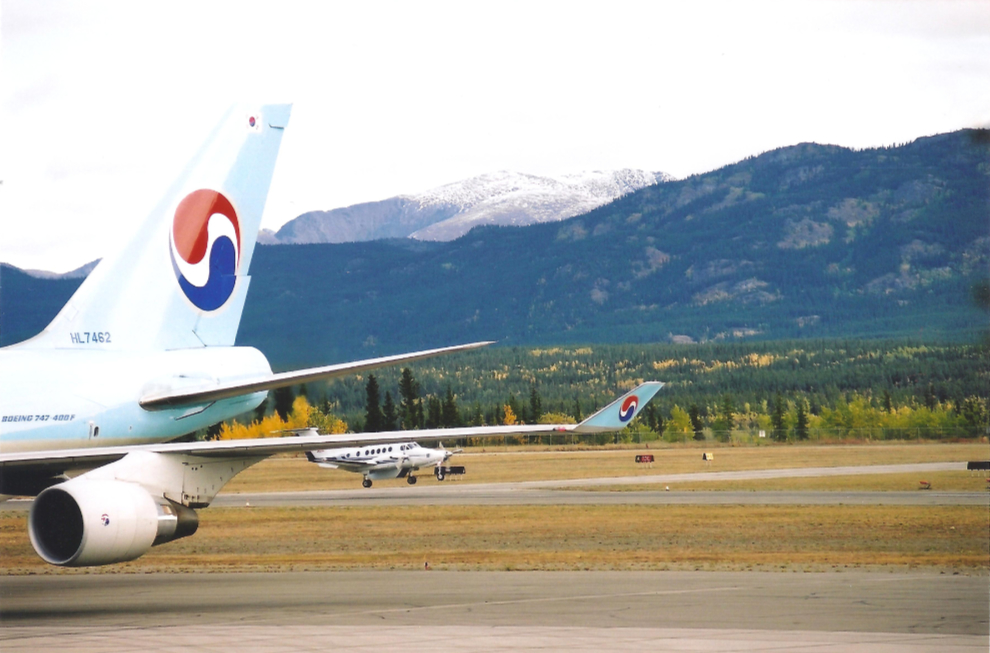

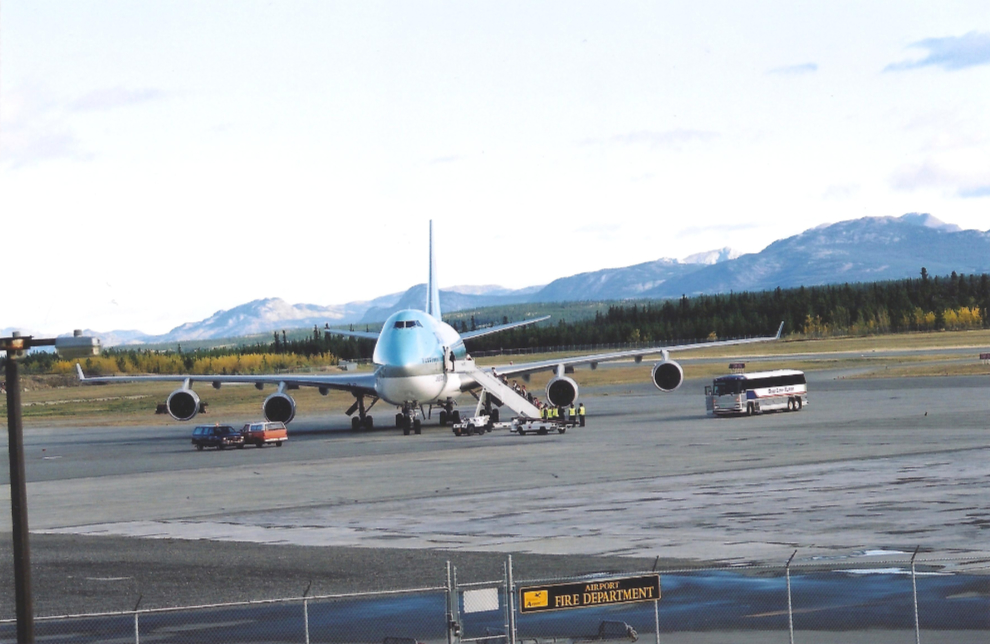
This plaque was mounted at the Erik Nielsen Whitehorse International Airport last year on the 10th anniversary of the attacks but due to scheduling conflicts had never been officially presented. It says:
Thanks and Remembrance
In commemmoration of the tenth anniversary of the terror atacks of September 11, 2001, the United States Consulate General of Vancouver, on behalf of the people of the United States, wishes to thank the people of Whitehorse for their support and generosity following the events of that day.
Canadians received diverted passengers unable to land at their U.S. destinations, opening not just their airports but their homes and hearts.
Neither terrorism nor adversity can conquer free people, and we are grateful to stand with neighbors who are willing to share the burdens of trying times and to work together for good. Our profound gratitude goes to all Canadians for the many acts of kindness and support rendered in the wake of September 11, 2001.
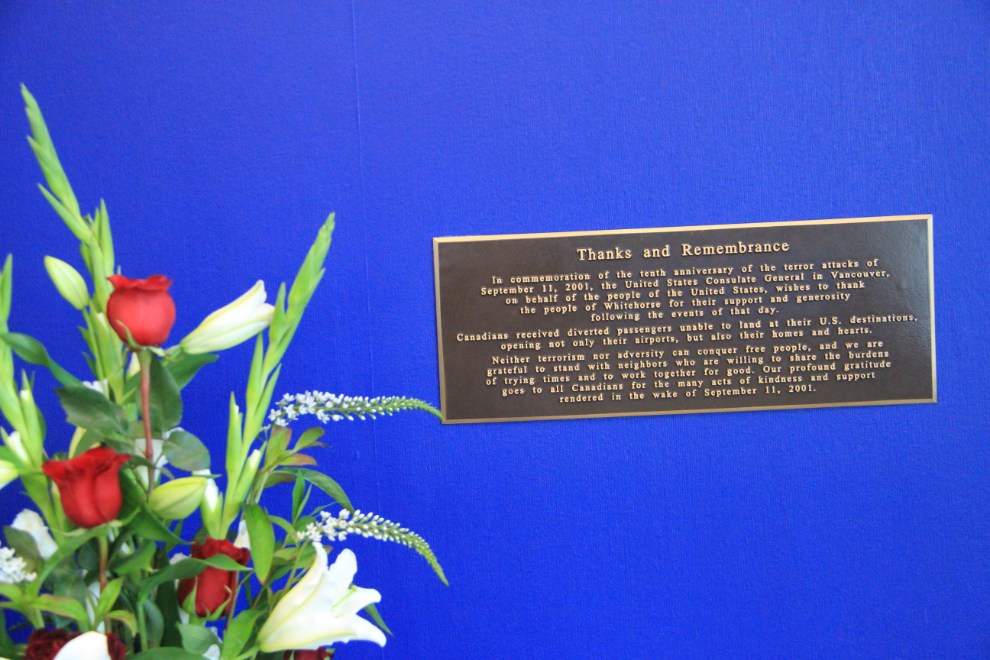
The next three photos were shot during the presentation ceremony yesterday.
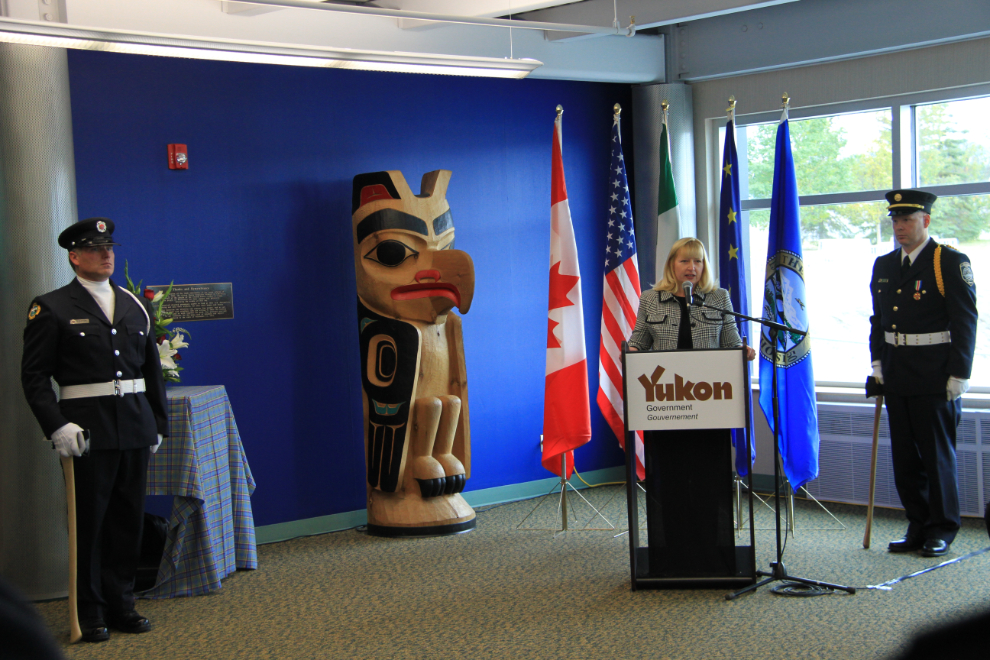
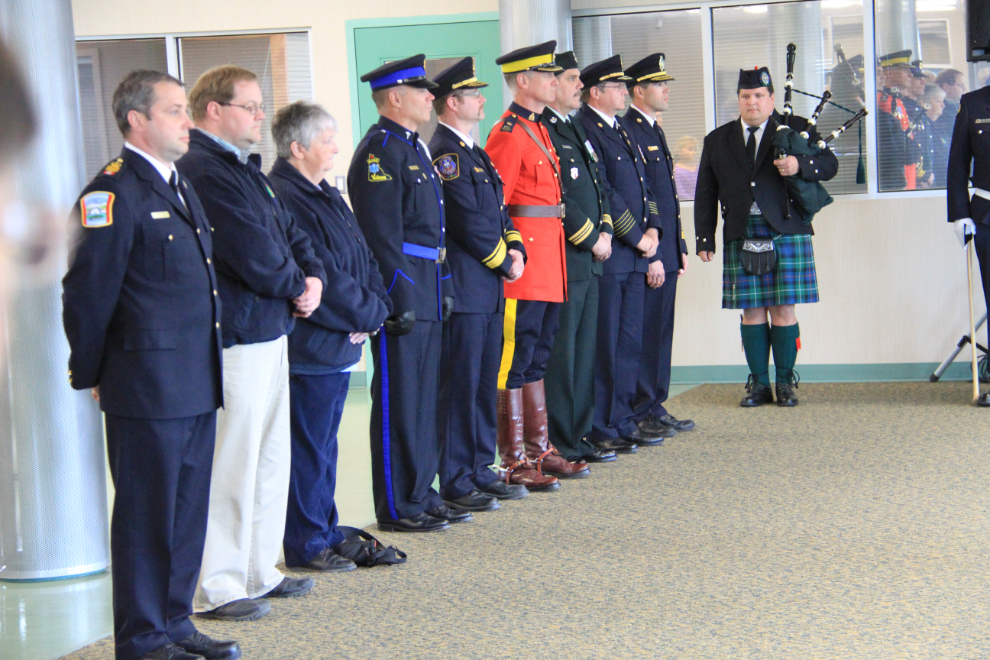
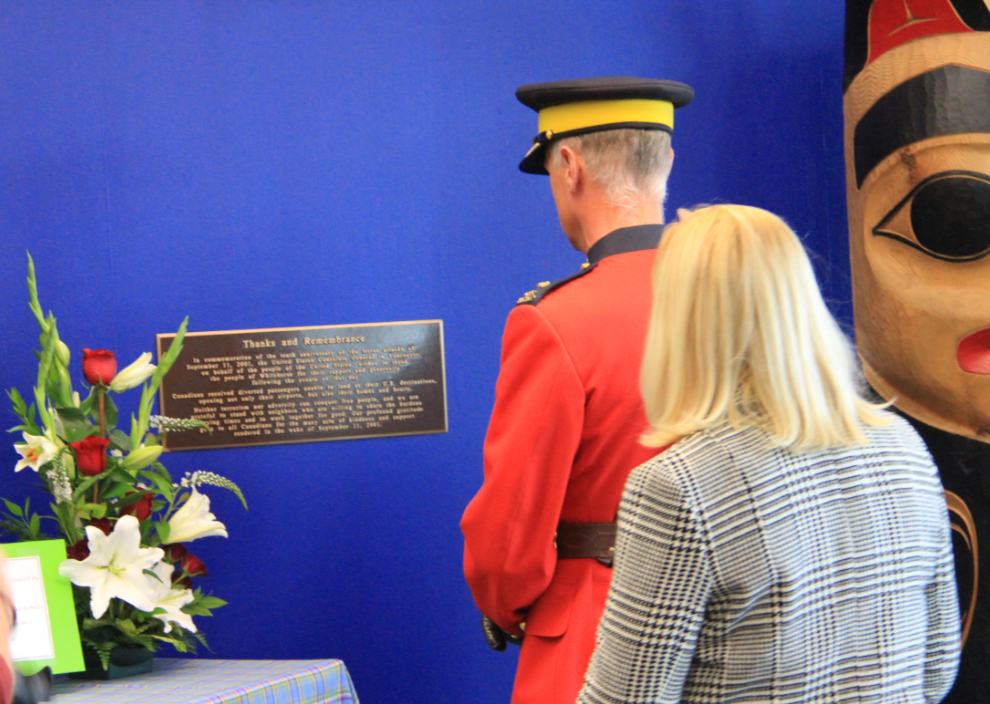
The final photo shows the fire department honour guard arching back to their base.
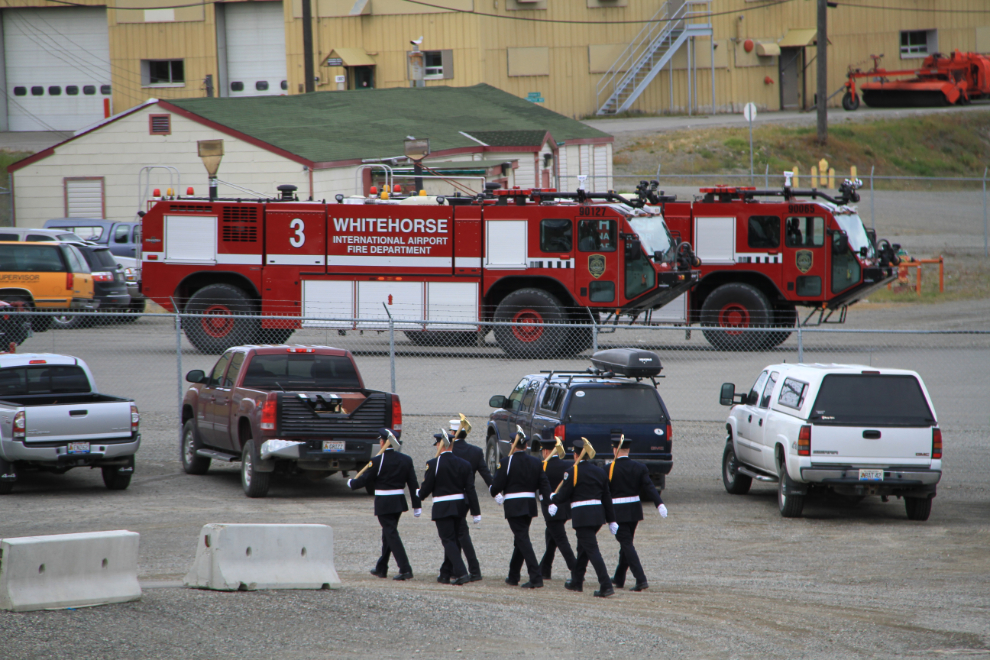
The point of this post is reflected in this comment from the Emergency Measures report: “The question of why this potentially dangerous aircraft was directed to Whitehorse rather than another airport remains unanswered by senior national agencies, (FAA, NORAD, Transport Canada). Given the international security protocols presently in place due to potential terrorism activity, many of these agencies have become even more cryptic in their public information, especially to requests for information regarding terrorism activities. As a result, questions about the decision-making process to re-direct the two Korean aircraft to Whitehorse have not been answered in any significant detail. It is expected that greater detail on this event will not be forthcoming from these agencies in the short-term.”
Although Prime Minister Jean ChrÈtien had authorized American or Canadian forces to shoot down the aircraft, that was not done, despite the situation being considered serious enough that 8 other aircraft initially diverted to Whitehorse were re-diverted to other airports to keep them away from the Korean ones. That leads me to the conclusion that senior military and governmment officials were willing to gamble with the lives of the people of Whitehorse.
Last year, Max Fraser released his excellent documentary film, Never Happen Here ñ The Whitehorse 9/11 Story, at the Dawson City International Short Film Festival (see the trailer). A 24-minute interview with Max Fraser is worth watching. We all have the same question – a question which we know we’ll never get an answer to.